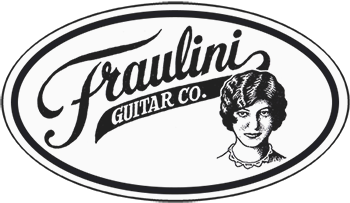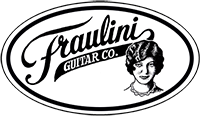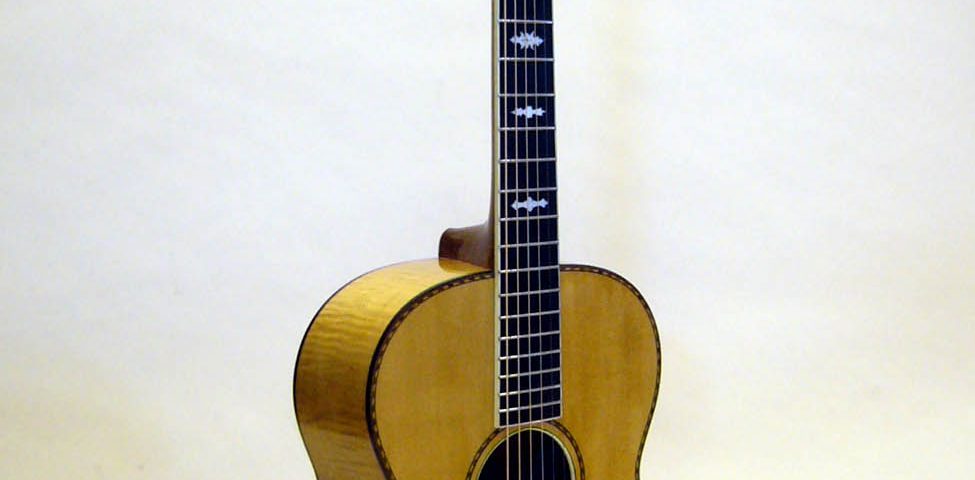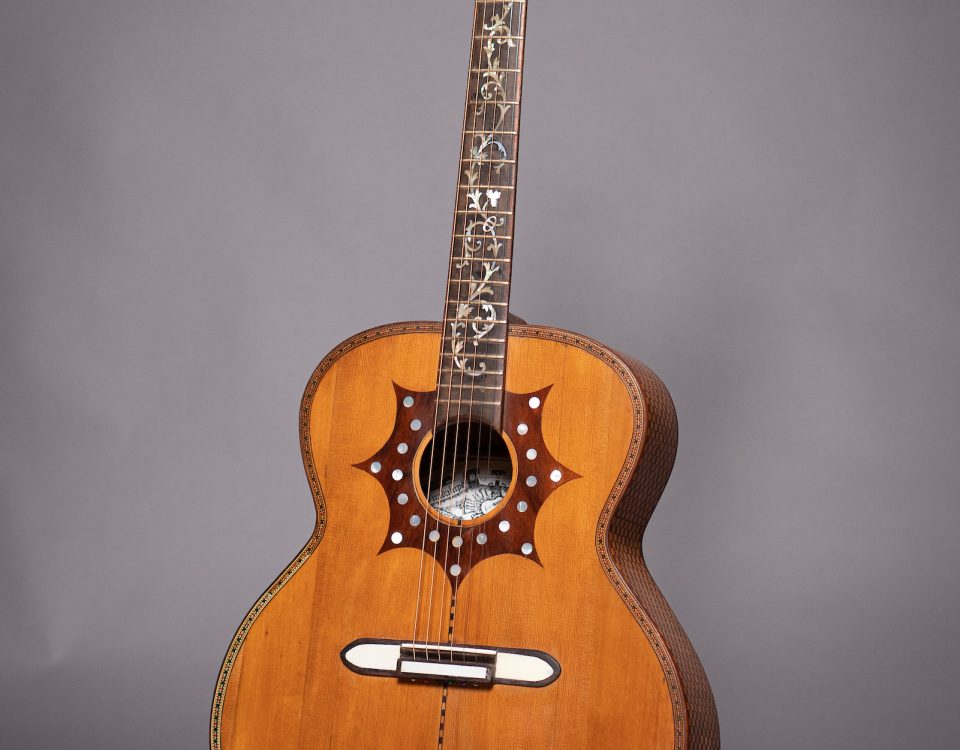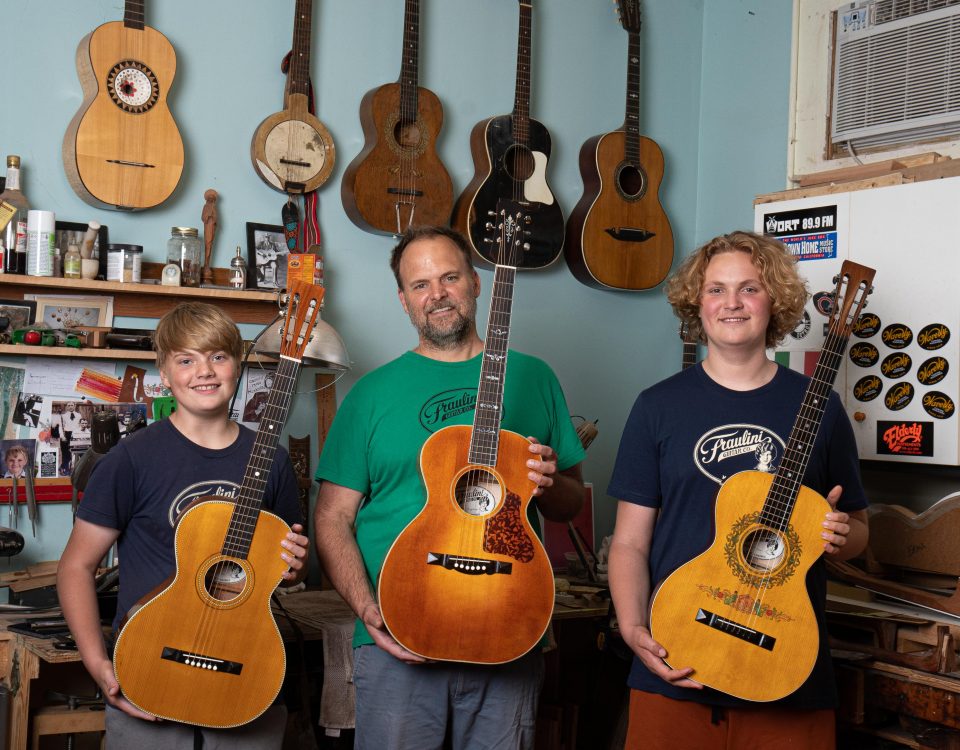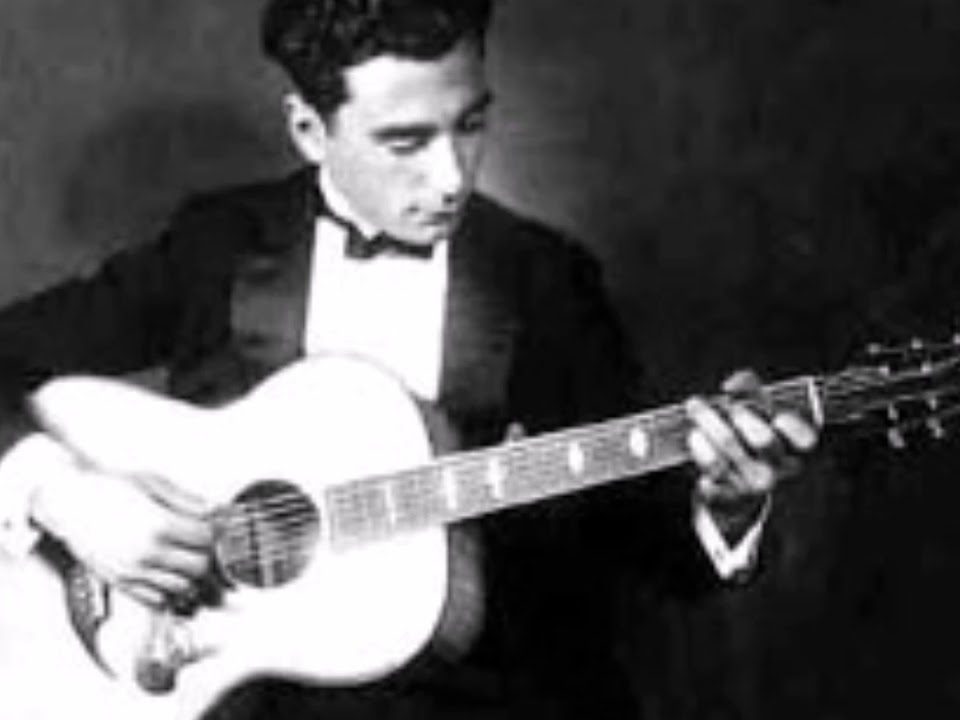New 14 Fret Model- Felix
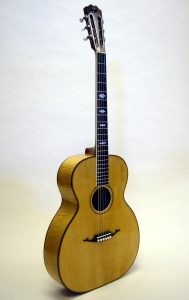 I’ve been wanting to make a guitar for my friend Craig Ventresco for a long time. Craig is one of my favorite guitar players of all time. He plays real ragtime, drawing from source material that is neglected by the vast majority of musicians who attempt to play early American music. Craig has an incredible of knowledge of early popular music and plays it with the spirit and attack of some of my favorite early blues players, without attempting to imitate their music. He has a unique technique, using a flatpick while also picking with his ring finger, that leaves the listener wondering how one person can possibly make all that sound. If you haven’t heard him, I strongly encourage you to look him up and get one of his CDs, or check out one of his YouTube videos. You won’t be disappointed.
I’ve been wanting to make a guitar for my friend Craig Ventresco for a long time. Craig is one of my favorite guitar players of all time. He plays real ragtime, drawing from source material that is neglected by the vast majority of musicians who attempt to play early American music. Craig has an incredible of knowledge of early popular music and plays it with the spirit and attack of some of my favorite early blues players, without attempting to imitate their music. He has a unique technique, using a flatpick while also picking with his ring finger, that leaves the listener wondering how one person can possibly make all that sound. If you haven’t heard him, I strongly encourage you to look him up and get one of his CDs, or check out one of his YouTube videos. You won’t be disappointed.
Back to the guitar. All of my existing models have 12 frets to the body. Craig is a player who takes full advantage of the fingerboard and really needs to have a 14 fret model. In general, the guitars that I draw my inspiration from are 12 fretters, and there are a fair amount of luthiers who are making copies of early Martin and Gibson 14 fret guitars, so I didn’t want to copy one of those. I decided that I would have to design a model especially for Craig. I tried to imagine what some of my guitar building heroes might have done if they had to build a 14 fret guitar.
I started out looking for suitable shapes. I settled on an early guitar by John D’Angelico. D’Angelico learned his trade in the shop of his uncle, Raphael Ciani, and built a lot of really beautiful instruments before he started making arch tops in the early 30’s. The shape was very distinct with a wide lower bout and a tight upper bout.
For woods, I chose a German Spruce top and maple back and sides. I wanted the guitar to be loud and to ring out very clearly. Craig is a dynamic player and I wanted to make an instrument that would be capable of kicking out some sound, but wouldn’t muddle all that was coming out. I’ve had 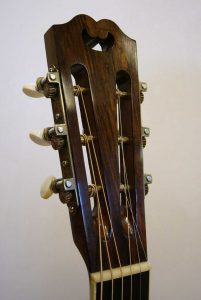 good results with the German and maple combination in the past, so I thought it would work well for this one. I ladder braced the top.
good results with the German and maple combination in the past, so I thought it would work well for this one. I ladder braced the top.
It’s always fun when you just get to build a guitar and you don’t have to follow any rules or try to match an existing instrument. Craig gave me free reins on the project, so I was able to pick appointments from some of my favorite instruments and mix them up on this guitar. I chose a headstock design that I saw on a guitar by Rocco Mango, a NYC luthier who worked independently in the early part of the last century. The design is fairly common on Neapolitan mandolins, but doesn’t tend to show up in guitars. It is a beautiful effect.
I used the same fingerboard inlays that showed up on many of the old Galiano and fancy Oscar Schmidt instruments. The old inlays were most likely cut in Germany and sold through some supplier at the time as they show up on quite a few of the old instruments.
For the bridge, I designed a sort of hopped up floral/mustache bridge, similar to the bridge on the Stoneman Galiano, but with relief carved flowers on the ends, something that shows up on a lot of early European parlor guitars.
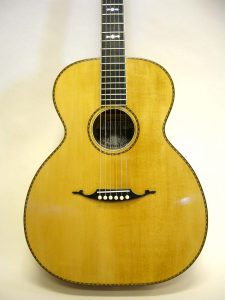 I figured that there was enough going on with the general aesthetic, so I used a fairly plain diagonal purfling, along with a rosewood binding .
I figured that there was enough going on with the general aesthetic, so I used a fairly plain diagonal purfling, along with a rosewood binding .
I finished the guitar with an oil based varnish. The oil based varnish can go on thin, not quite as thin as French polish, but gives better protection than either shellac or spirit based varnish. It also dries nice and hard, which I think contributes to the tone. Most importantly, it’s not super toxic, like nitrocellulose lacquer, it’s relatively easy to work with and gives a great depth to the finish.
The end result was a great sounding guitar. I haven’t heard Craig play it yet, but from all reports he’s happy with it and it’s doing everything he asks of it. I’m really looking forward to the time that I get to hear him play it in person. Hopefully it won’t be too far off.
